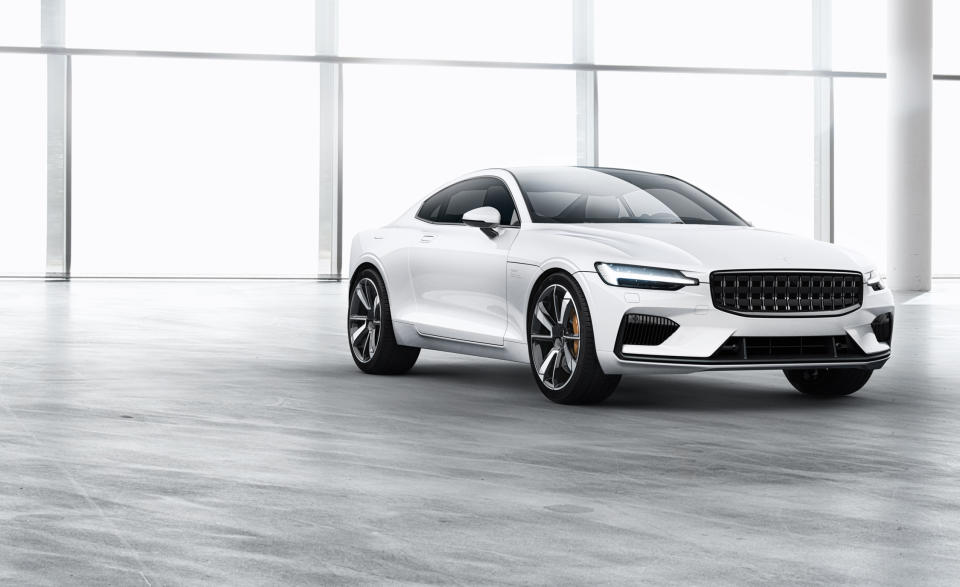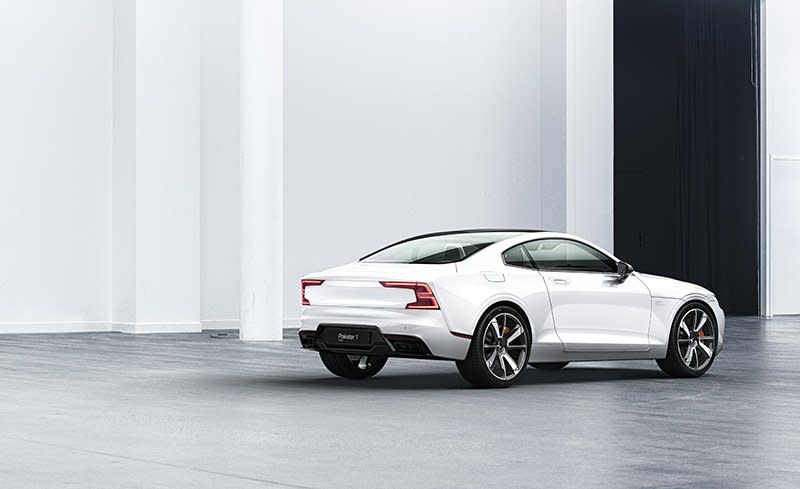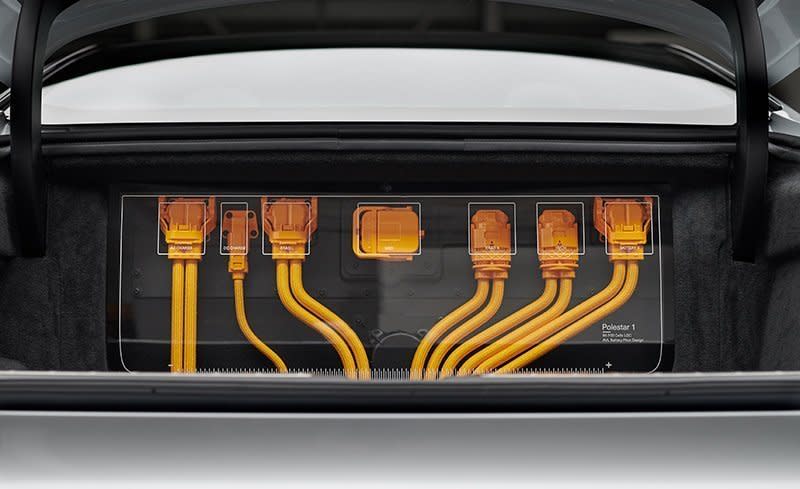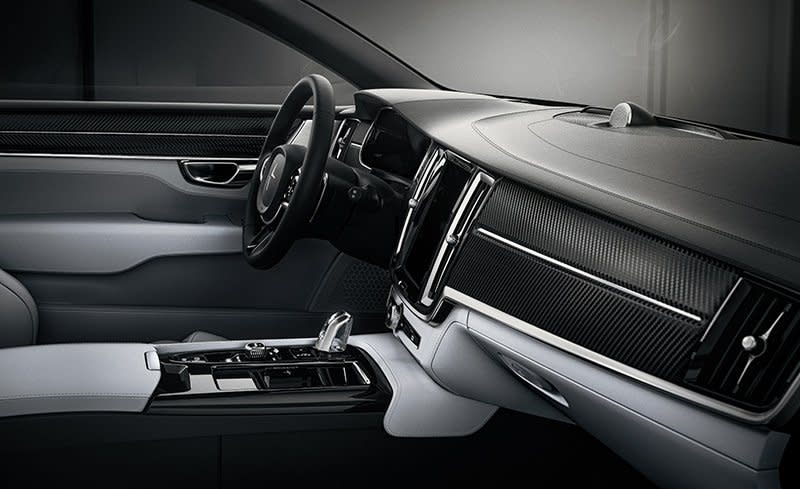2020 Polestar 1: The S90 Coupe Volvo Won't Build

Only a few months ago, Volvo announced that its in-house performance division, Polestar—heretofore known for imparting engine and chassis tweaks to the S60, V60, and other Volvos—would begin building cars under its own name. Now, the first of those Polestar cars has been unveiled. Dubbed the Polestar 1, Polestar’s initial offering isn’t quite a clean break from Volvo. Instead, it’s effectively a coupe version of the Volvo S90.
There’s a little more to it than that, of course. Although the 1 is built on the same SPA platform that underpins Volvo’s 90-series cars (S90, V90, and XC90), Polestar engineers snipped 7.9 inches from the rear overhang and 12.6 inches from the wheelbase to create the two-door. At 177.2 inches overall, the Polestar 1 is almost six inches shorter than a BMW 4-series coupe.

The front-end design is clearly lifted from the S90—sans the Volvo badge on the grille—and the rear similarly echoes the sedan. The overall shape was previewed by 2013’s Volvo Concept Coupe. Unlike its Volvo siblings, however, the Polestar 1 uses carbon fiber for “a majority” of its body panels. The claimed weight savings is some 500 pounds, and while a total curb weight is not stated, Polestar said the Polestar 1 carries 52 percent of its mass over the rear axle.
Inside the two-plus-two-seat coupe, major elements taken from the 90-series Volvos include the dashboard with its vertically oriented center touchscreen and bladelike air vents, the steering wheel, the center console, and even Volvo’s crystal gearshift. Overall, though, Polestar says that 50 percent of the coupe’s parts are specific to the Polestar 1.
Polestar is supposed to field a lineup of “high-performance electrified cars,” and while the Polestar 1 is not an EV, it’s a plug-in hybrid with a potent powertrain. The company claims a total system output of 600 horsepower and 738 lb-ft of torque—as compared with 400 horsepower and 472 lb-ft for the T8 versions of today’s Volvos (or 421 hp and 502 lb-ft with the Polestar performance optimization package).

As in those Volvos, the powertrain is based on a turbocharged and supercharged 2.0-liter inline-four. The gasoline engine sends its output to the front wheels, while a pair of electric motors power the rear axle. The chassis features adaptive dampers by Öhlins and brakes with six-piston calipers from Akebono. It also features torque vectoring across the rear axle. In the 1’s Pure (EV) mode, it functions as a rear-drive car, and Polestar claims that it can travel up to 93 miles solely on battery power—farther than any current PHEV.
The plug-in-hybrid drivetrain is just a baby step, however. Polestar CEO Thomas Ingenlath (also Volvo’s chief design officer) said that all future Polestar models will be fully electric. Those future cars are the Polestar 2, an entry designed to compete with the Tesla Model 3, and the Polestar 3, a larger SUV. All three will be built at a new factory in China that is due to be completed in 2018. Production of the Polestar 1 is set to start in mid-2019, with the 2 coming onstream later the same year. The Polestar 3 should follow by 2021.

The Polestar models will not be sold—or, more accurately, leased—through Volvo dealers. Instead, the company wants to follow the Tesla model, with retail experience centers, while vehicle ordering is done online. How Polestar will be able to circumvent dealership laws—an issue that has been a sticking point for Tesla in some states—is unclear. The monthly lease price is configured like a car-sharing subscription, with insurance and maintenance included. Vehicle servicing will take place at Volvo dealerships, but Polestar customers won’t necessarily see a Volvo shop, since pickup and drop-off is included. So, too, is access to other cars—including Volvos—such as when traveling. Polestars will use an app-based key, which will unlock the car, enabling the pickup and drop-off service. The lease terms are two or three years, after which the Polestars will be leased again as certified pre-owned used cars.
Pricing hasn’t been announced yet, with Polestar saying only that the Polestar 1 will be the “halo” offering, at the top of the eventual three-model lineup. Only 500 will be available per year once production starts, but the company is ready to accept deposits starting October 17.

 Yahoo Autos
Yahoo Autos 